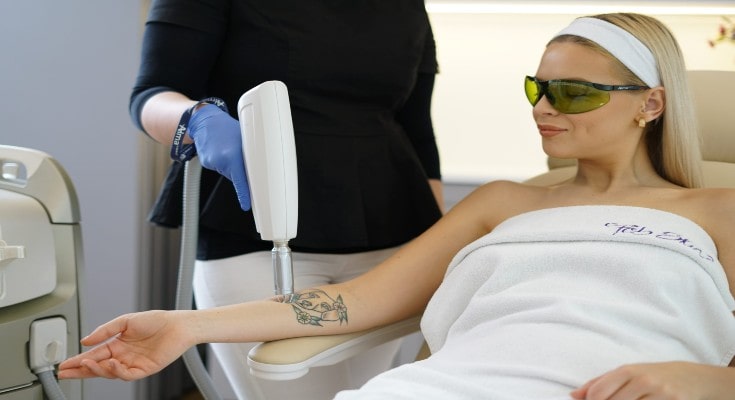-
22 February 2022
Does Location of The Tattoo Affect Its Removal?

Tattoos that have lost their sheen, value or significance can become annoying and frustrating after a while. However, the latest technological advancements in laser therapy have helped thousands of people get rid of the unwanted ink on their bodies.
Undoubtedly, best laser tattoo removal Melbourne has become one of the preferred choices for the elimination of ink. People opting for the treatment have a variety of questions in their minds, and one such query is how the location of the ink affects the removal process. Among several factors that impact the flushing out of the ink, the location plays a significant part. Here is how it makes a difference.
The location of the tattoo is highly significant when you are getting inked and even when you are getting it lasered for removal. During the laser treatment, a high-intensity light beam is targeted on the ink.
The heat produced by the laser breaks the ink pigment into microscopic particles that are flushed out of the body with the help of the lymphatic system. The process begins with slight fading of the ink and is spread across several sessions.
The lymphatic system is a part of the immune system that carries lymph from the tissues to the bloodstream. It consists of several lymph nodes, ducts, vessels, and organs. The lymph carried by the network is a white fluid comprising lymphocytes that kill bacteria present in the blood and chyle that includes proteins and fats.
The lymph nodes are responsible for the creation of immune cells, which act as the natural defence mechanism of the body. The lymph nodes produce more white blood cells when they detect the presence of bacteria in the lymph fluid and protect the body from infections.
They are responsible for carrying the disintegrated ink particles and waste back to the bloodstream. The liver and the kidney then work on flushing them out through excretion. Thus, the lymphatic system is often called the drainage system because it moves the fluid from the tissues to the bloodstream.
It continuously works on removing infection and other waste from the cells. When it encounters ink particles, it considers them as foreign bodies that need to be removed. Thus, the network starts working relentlessly and needs more time to complete the task of removal, making laser tattoo removal a lengthy treatment. The gap between consecutive sessions ensures that the lymphatic system gets enough time to spring back in action for the next lot of particles.
Most people are not aware of this fact, but the placement of the tattoo can affect the removal process. However, it is imperative to understand that the position of the tattoo affects the time taken to remove the ink from the body. As stated above, the elimination of the shattered ink is dependent on the circulation of blood.
Thus, the body parts where the flow of blood is faster ensure better results. Whereas parts where the flow is slower, it takes more time to get rid of the ink. Since blood circulation is faster near the heart, removal of ink from the neck, chest, shoulders, upper back, and upper arms happens quickly.
On the other hand, it occurs slowly if the tattoo is placed on the feet, legs, and hands because they are farther away from the heart. The rate of success is the highest with tattoos that are positioned close to the heart as the fading is faster and better.
With faster results, the number of sessions is also reduced. Thus, the upper body tattoos require a shorter gap between sessions, ranging from six to eight weeks because of their proximity to the heart. Conversely, tattoos in the lower part of the body need a gap of eight to twelve weeks between two sessions because of their placement.
The location of the tattoo also affects the level of pain a person experiences during the treatment. Although the laser beam feels like a rubber band snapping on the skin, it can be uncomfortable when you have a large tattoo to remove. Tattoos in areas where the skin is thin and sensitive hurt more during laser therapy, such as hands, feet, etc.
Also, females have thinner skin than males, so they may feel more pain. However, their endurance levels are higher, which makes them better suited for the treatment. The practitioner can help in bringing down the pain by applying a topical anaesthetic before the treatment begins.
The person undergoing laser therapy should not take any painkillers without consulting the practitioner, as it can have an adverse impact on the skin and lead to bruising during laser tattoo removal.
Thus, when you are planning to undergo laser tattoo removal in Melbourne, make sure that you know about the factors that affect the treatment. The location of the tattoo makes an impact on the duration, pain level and effectiveness of the therapy. Speaking to the practitioner about the impact of the location is a good idea before embarking on the journey.